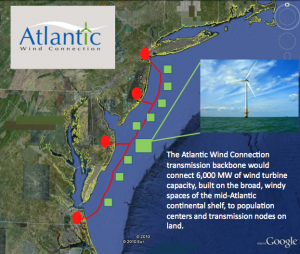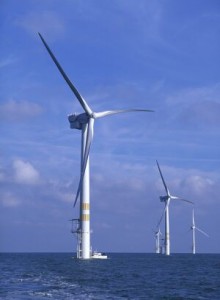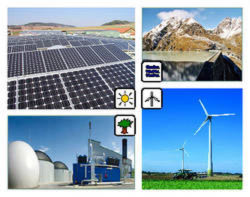Google is putting its money where its mouth is. Back in early September, 2008, Google’s CEO Eric Schmidt said, “We have a total failure of political leadership, at least in the U. S., and perhaps the world.” He then called for 100% of U. S. power to come from green energy in 20 years – with 500,000 wind energy jobs. (See “Google’s Eric Schmidt Details Energy Plan, Chides Lack of Leadership,” by By Katie Fehrenbacher, Sep. 9, 2008, on Gigacom.) Schmidt combined Al Gore’s call for 100% clean electricity in 10 years with Intel CEO Andy Grove’s call for millions of plug-in hybrid cars. (I would like to add that they should be plug-in hybrid biofuel, with the fuel coming from sewage and factory farm waste, not food crops.)
Recently, 10/12/10, Erick Schonfeld at GreenTech (onTechCrunch) wrote Google Backs Biggest U.S. Offshore Wind Project:
“Using its cash to kickstart renewable energy businesses, Google is now backing![]() the largest U.S. offshore wind farm project to date. The Atlantic Wind Connection is a proposed string of offshore wind turbines that will stretch 350 miles off the Atlantic coast from Virginia to New Jersey. Once completed, the project will produce 6,000 megawatts of power, which is equivalent to 60 percent of all the wind power built in the U.S. last year. The wind project will serve nearly 2 million homes.
the largest U.S. offshore wind farm project to date. The Atlantic Wind Connection is a proposed string of offshore wind turbines that will stretch 350 miles off the Atlantic coast from Virginia to New Jersey. Once completed, the project will produce 6,000 megawatts of power, which is equivalent to 60 percent of all the wind power built in the U.S. last year. The wind project will serve nearly 2 million homes.
“The entire project is expected to cost about $5 billion, but Google is only investing in the first phase to help get it off the ground (or, rather, out to sea). The first phase includes only getting the necessary governmental approvals and financing before the wind power line can actually begin construction. While it is the least expensive part of the process, it is actually the trickiest because of popular opposition to offshore wind farms in general. Other investors include Good Energies![]() and Marubeni Corporation.
and Marubeni Corporation.![]()
“Google has invested in wind projects before and entered into long-term contracts to purchase wind power. It’s last wind energy investment was $38.8 million, and this one will likely end up in the same range. Development stage costs for these kinds of projects usually run in the tens of millions of dollars. A Google spokesman says there are no related tax rebates or other benefits associated with the investment, rather Google is hoping to make a straight-up financial return.”
We are at a crossroads, a point of inflection on the curve of human history. We can’t continue with business as usual. We need to change the paradigm. The peoples who change first will “win.” Some are getting it: Google, Good Energies![]() and Marubeni Corporation. And note that Google is “hoping to make a straight-up financial return.” They are doing this for Money!
and Marubeni Corporation. And note that Google is “hoping to make a straight-up financial return.” They are doing this for Money!
One question that remains is “What are the environmental effects – the economic externalities – of all these wind turbines?” Since wind turbines are a fuel-free energy source that works by “harnessing a process rather than consuming a resource“, these are clearly less than corresponding coal, oil, or gas turbines. Since wind turbines don’t create radioactive waste or present a terrorism target, these are clearly less than nuclear power plants.
The big question is how will we power the future? Popular Logistics agrees with Google’s Schmidt, and Prof. Jurgen Schmid, of University Kassel, designer of the Kombikraftwerk, sustainable energy via a mix of renewable technologies integrated via a computerized flexible grid.


